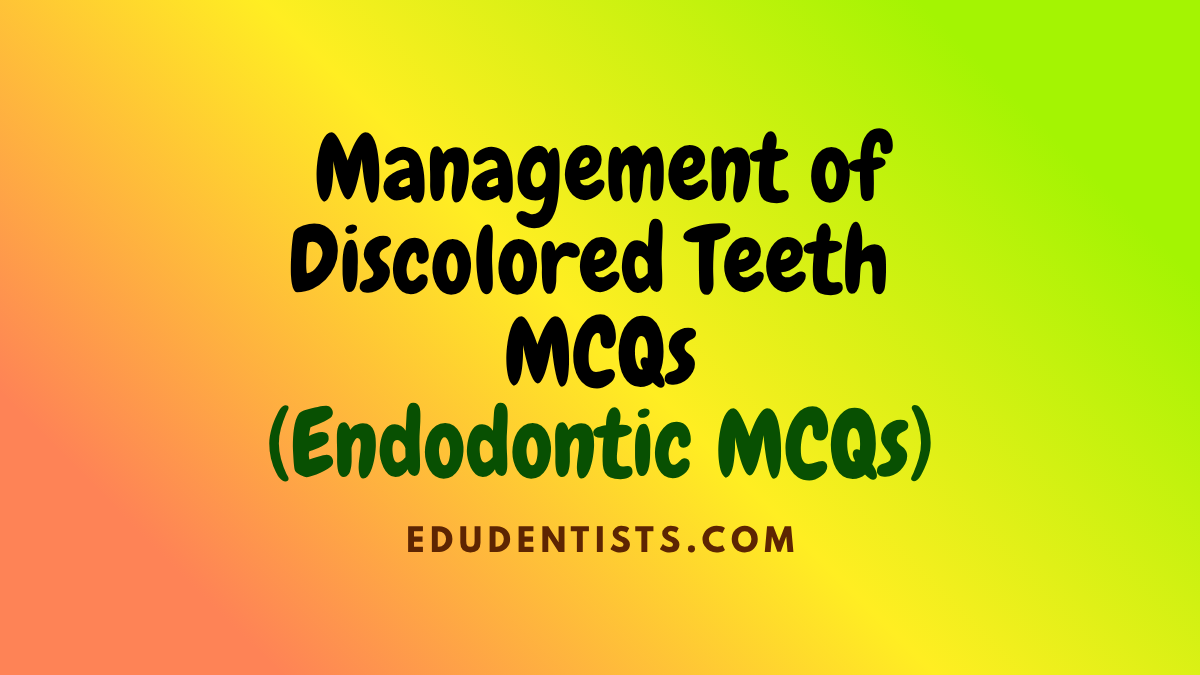
Management of Discolored Teeth MCQs (ENDODONTICS MCQs)
Management of Discolored Teeth MCQs (ENDODONTICS MCQs)
1. The most deleterious side effect of bleaching on non-vital teeth. is:
A. Percolation
B. Cervical resorption
C. Erosion
D. Internal resorption
2. The “in-office non-vital bleaching technique” is:
A. Walking bleach technique
B. Power bleach technique
C. Thermocatalytic technique
D. Night guard technique
3. Bleaching of vital teeth by “In-office technique” is called as:
A. Power bleach technique
B. Thermocatalytic technique
C. Night guard technique
D. Walking bleach technique
4. Microabrasion techniques for elimination of discoloration of teeth work by:
A. Removing surface enamel
B. Bleaching stains
C. Bleaching developmental defects
D. All of the above
5. The best material for sedation of dental pulp is:
A. Zinc oxide-eugenol
B. Zinc phosphate
C. Calcium hydroxide
D. All of the above
6. External tooth discoloration can be caused by:
A. Excessive fluoride intake
B. Prolonged antibiotic use
C. Trauma to the tooth
D. All of the above
7. Internal tooth discoloration can be caused by:
A. Pulp necrosis
B. Dental caries
C. Aging
D. All of the above
8. The technique used to mask severe tooth discoloration by placing a thin layer of tooth-colored material is called:
A. Veneering
B. Bonding
C. Crown placement
D. Composite restoration
9. Tooth discoloration caused by tetracycline use during tooth development is classified as:
A. Intrinsic discoloration
B. Extrinsic discoloration
C. Endogenous discoloration
D. External resorption
10. The process of microabrasion involves the use of:
A. Hydrochloric acid
B. Pumice
C. Air abrasion
D. Rubber cup polishing
11. The most common side effect of tooth bleaching is:
A. Tooth sensitivity
B. Enamel erosion
C. Pulp necrosis
D. Gingival recession
12. The use of a rubber dam during tooth bleaching helps to:
A. Protect the soft tissues
B. Isolate the tooth
C. Enhance the effectiveness of the bleaching agent
D. All of the above